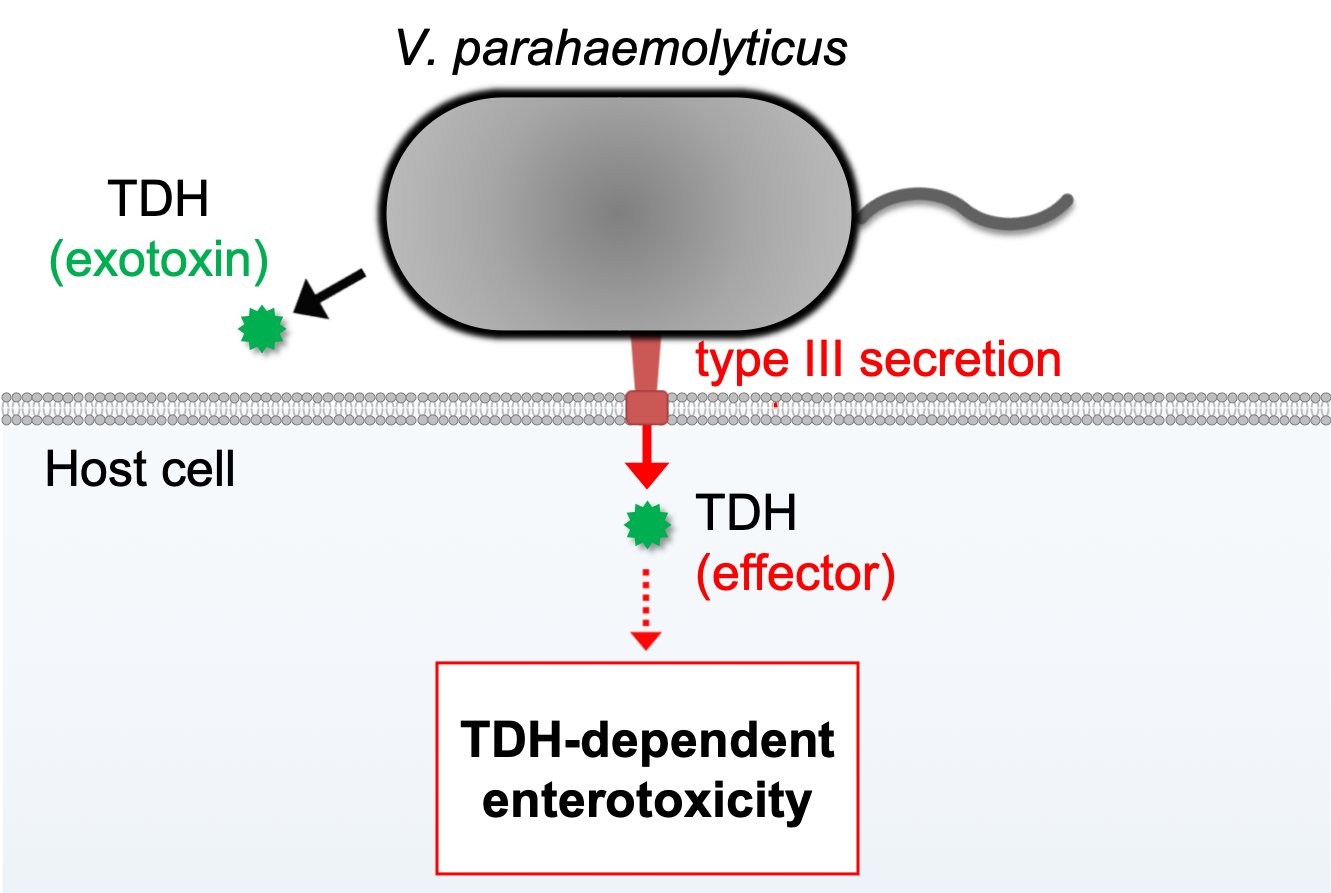Vibrio parahaemolyticus injects an exotoxin into host cells to evoke diarrhea (from Iida lab, in Nat Microbiol)
Vibrio parahaemolyticus is a Gram-negative marine bacterium that causes acute, seafood-associated gastroenteritis in humans worldwide. Although the diarrhea-inducing activity of V. parahaemolyticus is thought to be mediated by its type III secretion system 2 (T3SS2), the mechanism underlying T3SS2-mediated intestinal fluid accumulation is not fully understood.
Here, we found that thermostable direct hemolysin (TDH), an exotoxin of V. parahaemolyticus, is injected into host cells through T3SS2. We also showed that T3SS2-delivered TDH as an effector contributes to intestinal fluid accumulation in a rabbit diarrheal model of V. parahaemolyticus infection. Although TDH has been supposed to be related to the pathogenesis of V. parahaemolyticus over the past 40 years due to its epidemiological association, we unveiled its functional relevance to T3SS2. Thus, our work provides new insights into bacterial pathogenesis including the modes of action of exotoxins and the functionality of T3SS.
This article was published in Nature Microbiology on Feb 19, 2019.
Export of a Vibrio parahaemolyticus toxin by the Sec and type III secretion machineries in tandem
Matsuda S, Okada R, Tandhavanant S, Hiyoshi H, Gotoh K, Iida T, Kodama T
Links
- Home
- Achievement
- Research Activities
- Vibrio parahaemolyticus injects an exotoxin into host cells to evoke diarrhea (from Iida lab, in Nat Microbiol)








